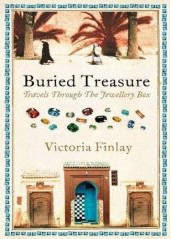 More than a century after the Battle of Hastings, the Saxons and the Normans still aren’t getting along. In Yorkshire things aren’t improved by the meddling of Prince John, who takes it upon himself to find an advantageous, Norman husband for the Saxon princess Rowena. This is not at all to the liking of her guardian Cedric, a proud Saxon who wants nothing to do with the invaders - and to marry his ward to Athelstane, another descendant of Saxon royalty, in the hope that the two together will form a powerful figurehead for a Saxon rebellion. So determined is Cedric, in fact, that he disinherited his own son when that young man began to entertain hopes of marriage to Rowena, and to acquire Norman ways. Now he’s back from the Crusades in the guise of the Knight of Ivanhoe, and his reappearance sparks a collision of the various plans that are afoot. John’s plot to usurp his brother’s throne; Cedric’s schemes of rebellion; Maurice de Bracy’s plan to seize Rowena for himself and Sir Brian de Bois-Guilbert’s similar designs on the Jewess Rebecca: all come together in a castle siege, which will only be lifted with help from some unexpected quarters.
More than a century after the Battle of Hastings, the Saxons and the Normans still aren’t getting along. In Yorkshire things aren’t improved by the meddling of Prince John, who takes it upon himself to find an advantageous, Norman husband for the Saxon princess Rowena. This is not at all to the liking of her guardian Cedric, a proud Saxon who wants nothing to do with the invaders - and to marry his ward to Athelstane, another descendant of Saxon royalty, in the hope that the two together will form a powerful figurehead for a Saxon rebellion. So determined is Cedric, in fact, that he disinherited his own son when that young man began to entertain hopes of marriage to Rowena, and to acquire Norman ways. Now he’s back from the Crusades in the guise of the Knight of Ivanhoe, and his reappearance sparks a collision of the various plans that are afoot. John’s plot to usurp his brother’s throne; Cedric’s schemes of rebellion; Maurice de Bracy’s plan to seize Rowena for himself and Sir Brian de Bois-Guilbert’s similar designs on the Jewess Rebecca: all come together in a castle siege, which will only be lifted with help from some unexpected quarters.
I finished this book a week ago and have been mulling over it ever since, trying to work out what to say (and, yes, catching up on my backlog - still). It’s the first book I’ve read by Scott and I will be on the lookout for more. The various schemes all intersected neatly and the action could be quite thrilling. The cast of characters was enormous, and while there were moments when I had to pause to remind myself of just who someone was, other were wonderfully memorable. Like Athelstane, a descendant of Ethelred the Unready, who inherited his ancestor’s nickname due to the length of time it took him to make up his mind about anything - except if there was food involved. And I loved Rebecca: smart, courageous, principled, and the antithesis of the wilting damsel in distress. Plus any novel the features Robin Hood and company is bound to be fun; I had to laugh at Friar Tuck protesting too much over the fine victuals that just happened to be in his hermitage.
But it’s not perfect. The dialogue tended toward the archaic and could be challenging to read. The character of Isaac, Rebecca’s father, was funny for a while, with his dithering and the way his wealth varied according to who he was talking to, but he quickly began irritating me. I wished he’s just stop whining and put a sock in it. And one thing that bugged me all the way through was the negativity with which the Jews were regarded by most of the other characters. It wasn’t universal, and it was historically accurate, but I still found it hard to tolerate for long periods at a time. And I have to admit to being a trifle horrified when I discovered that Ivanhoe had been christened Wilfred. Wilfred? No doubt a decent enough name in the twelfth century, but these days it doesn’t exactly say ‘dashing hero’, does it?
Rating: B-





















